If you follow me on Facebook and Instagram you know I post Pima Air & Space Museum photos every Monday. That’s the day I work at PASM as a volunteer docent, driving and narrating tram tours. Between tours there’s often time to take photos, and if I get enough bars on my iPhone I’ll post them on the spot.
Here are some of my most recent Monday at the Museum photos:
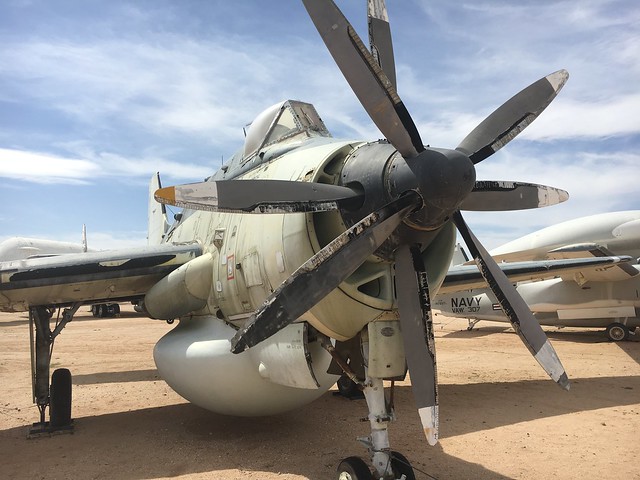
Our Gannet shows the effects of sitting outside in the Arizona sun, but it’s still an imposing sight (and my favorite ugly duckling). This was the Royal Navy’s airborne early warning radar version of the Gannet; other versions were used as anti-submarine aircraft.
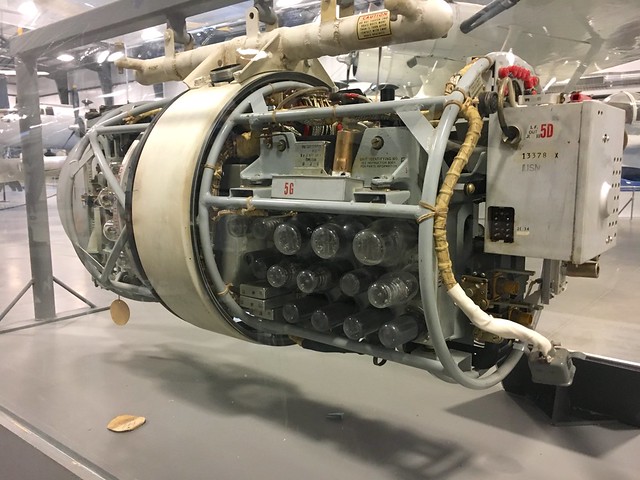
The APS-4 was a pod-mounted airborne search radar for airborne interception and air-to-surface-vessel applications. It was first used by US Navy F6F Hellcats and F4U-2 Corsairs, later by RAF Mosquitos. Post WWII, it saw service with the Royal Navy and Swedish Air Force. I can’t find any info on its capabilities, but imagine its range was extremely limited, probably in the neighborhood of five miles. I base this on my knowledge of fighter/interceptor aircraft radars of the late 1940s and early 1950s. If any readers know more, I hope they’ll post clarifying comments.
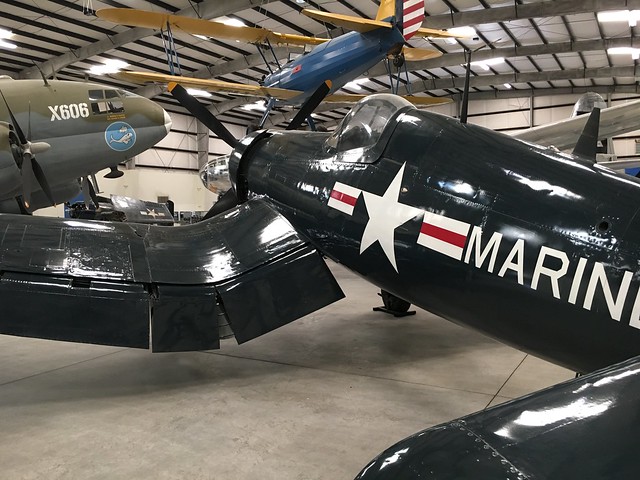
The Corsair, as noted, was one of the aircraft to carry the APS-4 radar during WWII, mounted in an underwing pod. A similar podded radar was fitted to the TBM Avenger, below:
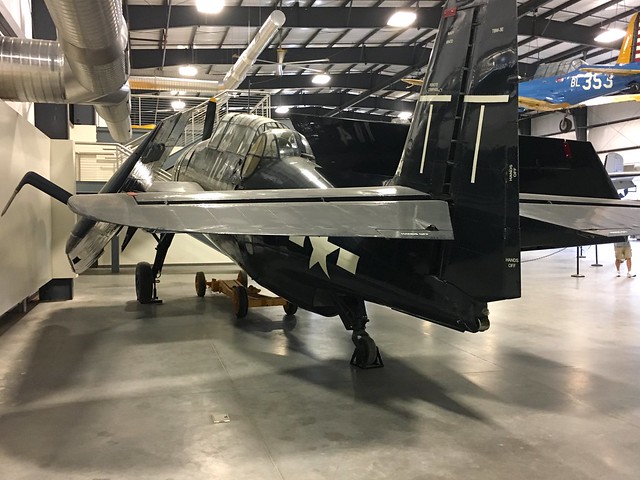
One of the docents I work with claims his first flight as a Navy aircrewman was on a TBM. Avengers served on with the Navy after WWII in training and carrier onboard delivery capacities, but were retired in the mid-1950s, so I’m a wee bit skeptical. We both agree on one thing, though: the Avenger is enormous, and must have seemed even more so when it was introduced in the early 1940s.
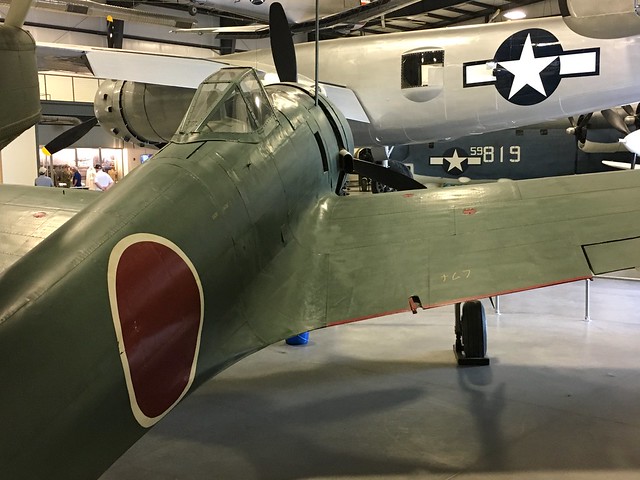
No radar here. Just two nose-mounted machine guns and an iron sight. Agile and fast, it surprised American and allied fighter pilots.
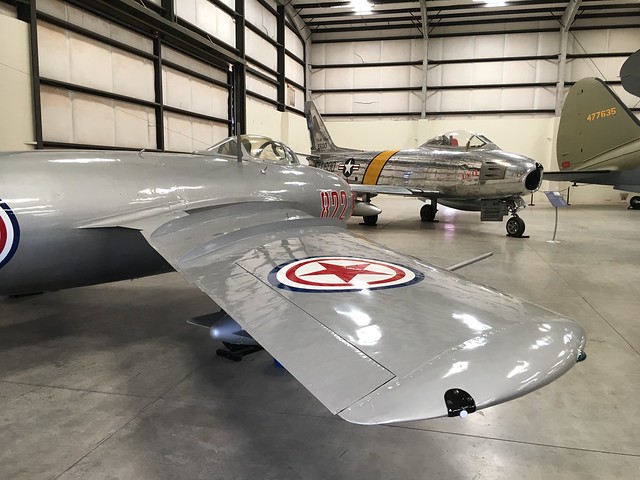
When the Sabre and MiG first went on display I wrote a talking paper on the relative strengths and weaknesses of the two fighters for my fellow docents. I just got around to posting it here last week, and yesterday revisited the exhibit to take a fresh photo.
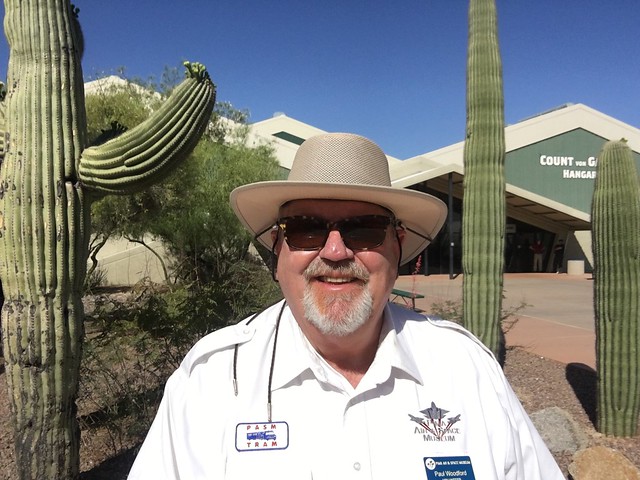
When posting Monday at the Museum photos to Facebook and Instagram, I usually include a selfie (because, hey … Facebook & Instagram, am I right?). This is yesterday’s, taken in front of the main entrance. Note the hat: although I wear it religiously, it’s not enough to protect me from the sun … just ask my dermatologist.